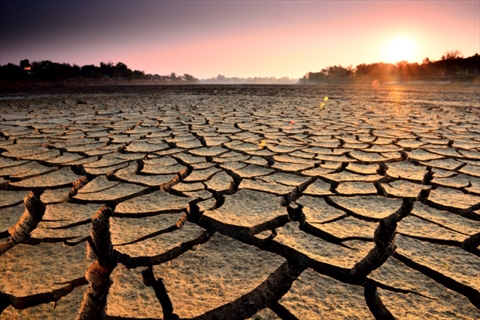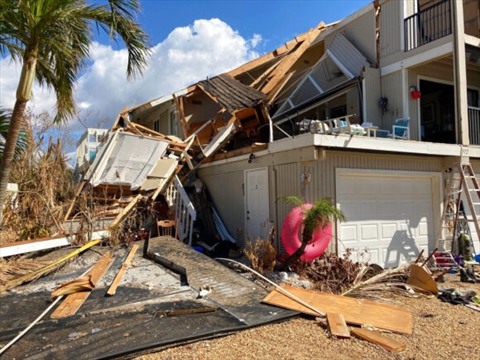
When working in the sky seeding industry, Garrett Cammans and his brothers occasionally avoid discussing their most difficult experiences, such as when one of them got stuck in heavy mountain snow and had to climb out by himself at night.
According to Cammans, they are traveling to some fairly isolated and remote areas. Additionally, we don't like to talk about our close encounters with animals at the family dinner tables.
The Cammans life venture, Utah-based North American Weather Consultants, which holds sky planting contracts throughout the U. S. West, centered in the Rocky Mountains, is focused on snow as much as possible.
Market has recently been booming. In the Rockies, cloud seeding — using aircraft or ground-based machinery to waft rain and snow-making particles into clouds— is becoming more popular in the midst of a two-decade drought.
In the past five years, Colorado has added three different services. In 2018, Wyoming added an underwater program after starting planting in 2014. The state government recently approved record support to further strengthen programs and research, and Utah has consistently increased its fleet of cloud seeding gear.
The Colorado River and its tributaries, which supply water to millions of people from Wyoming to Los Angeles, are under serious pressure due to the drought. This is a significant factor in the growth.
Not everyone thinks sky planting is a useful treatment. According to some analysts, conserving water is a better, more practical way to guarantee that there is enough water to go around. They claim that juicing sky to produce slightly more hurry is a risky alternative.
According to Kathryn Sorensen of the Kyl Center for Water Policy at Arizona State University in Tempe, it's's usually simpler to talk about how to get more water than it is to use less. When you consider the issue of over-allocation on the Colorado River, the statistics are so large that the real choices are to use less, especially in the agricultural sector. That is extremely painful to fight socially.
However, local and state officials in the Rockies are enthusiastic about cloud seeding these days because they want a cheap way to add more water to streams, creeks, and especially the large Colorado River system pools that hit record highs next year.
Metal iodine is shot into clouds as they approach, where liquid binds to the particles to form ice and snow. Waters that is released as it melts is stored year-round in that snow high in the mountains.
Snowmelt flows into the Green River, areas inland, and eventually reaches the Colorado River and its pools, including Lake Powell and Lake Mead, as a result of cloud seeding by planes in Wyoming that aims to increase snow on the Wind River Mountains' western part.
According to Bryan Seppie, public manager of the Joint Powers Water Board, which supplies water to areas in southwest Wyoming, cloud seeding produces waters that wouldn't have existed before. Simply put, that is advantageous to the whole product.
In the West, where the adage" whiskys for eating and drinking is for fighting over those with drinking rights established long ago have selection ," when the storms dry and lakes are limited. Reports have been pitted against one another as a result of the highly constrained water supply.
However, they have come to accept sky planting as a partial solution.
The Upper Basin, where the river is fed by snow, receives about$ 1.5 million each year from water services in the Lower Colorado River lake. A$ 2.4 million commitment to the work was reportedly announced by the federal government, which was a sign of the terrible times.
Cloud planting has been used globally and in the Rockies for more than 50 years, despite the recent interest.
According to Frank McDonough, a professor at the Desert Research Institute in Reno, Nevada, federal support dried up in the 1990s and early 2000s due to the sold cloud seeding industry there.
National water officials were aware that it worked, so they continued to account it with states, according to McDonnough. There is now fresh proof that it is effective.
A sharp rain pattern that mirrored the seeding was found in a 2017 study of Idaho underwater seeds, providing proof that the technique is effective.
The amount of extra steam cloud seeding produced in Utah has been calculated. According to a Division of Water Resources analysis, it increased the state's's supply by 186, 000 acre-foot, or almost 12 %, in 2018. According to the agency, the price was$ 2.18 per acre-foot, which is a small portion of the$ 20 that farmers in California pay for that water.
According to Jake Serago, the division's's water sources expert, that cost per acre-foot was so low that it was practically a no-brainer.
However, according to Sarah Tessendorf of the National Center for Atmospheric Research, increased study is required to demonstrate clearly how much more water cloud seeding produces.
According to Tessendorf, a co-author of the Idaho cloud seeding learn, people frequently inquire as to what additional cent of rain formed.
How many silver iodide is produced over the course of an actual winter months is what matters most, she said, as it can have a small or significant effect on some sky. With the results of our new personal style, we don't yet have the answers to that, but we hope to in the coming years.
The second cloud seeding challenge of the rapidly expanding Rocky Mountain Front Range urban corridor north and south of Denver is currently in progress in the hills northeast of Boulder. For the St. Vrain and Left Hand Water Conservancy District, two ground-based producers have been pumping silver bromide into the heat this winter.
Each video has two wheels and a tank of silver iodide that is released by sputtering, propane-fueled flames on top of metal masts. A connections antenna receives signals that, depending on the situation, can turn the machine on and off.
According to Scott Griebling, a water resources expert with the city, the right circumstances have resulted in wet climate headed upslope, from the south, several times per month.
The issue since in the Rockies isn't a lack of snow. Some cloud seeding producers have been shut down in the midst of a wet bound out of concern that the heavy rain is already sufficient to cause flooding.
According to Jonathan Bowler with the Savery-Little Snake River Water Conservancy District, which keeps track of discharge, producers in southern Wyoming's's Sierra Madre Range, where snow is rivaling the deepest on report, are among those that are idle.
According to Bowler," You type of live and die by the liquid here." Also wet is one serious, and also dry is another. However, you just kind of have to make do, regardless of what it's's going to give you.
The long-term percentages are what matter to the Wyoming Water Development Commission, which is in charge of the state's's cloud seeding program, according to Chairman Ron Kailey Jr. According to Kailey, you must consider both the good and bad year as well as everything in between to assess the program's's success.
For more than 40 centuries, North American Weather Consultants has been seeding clouds. Four years ago, Cammans, who has experience in physics, chemistry, and personal programs, purchased the business.
North American Weather Consultants today has about 250 ground-based services and two aircraft in use throughout the Western U.S. Cammans employs about 20 people, including scientists and his sons, after expanding areas, such as the Colorado Front Range for the Boulder-area pilot program.
We start operating as soon as seedable issues do, he said. If the circumstances are right for underwater seeding, we have a pilot who will take to the skies and fly. We have equipment that can be remotely operated by scientists from their home rooms.
Around 150 paid companies, some on their own land, manually turn on and off many of the company's's ground-based producers.
Cammans frequently delegated those most difficult tasks to his brothers Parker and Carver, who operate trucks with knobby, 35-inch( 1-meter ) tires suitable for snow and mud.
They get to perform some of our most thrilling and vulnerable tasks, he claimed.




